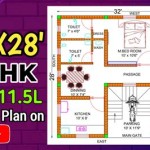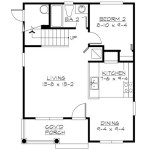How To Read House Building Plans
House building plans are essential for any construction project. They provide a detailed visual representation of the intended structure, including its dimensions, materials, and layout. Understanding how to read house building plans is crucial for architects, contractors, and homeowners alike, as it allows them to visualize and plan the construction process effectively.
Reading house building plans involves interpreting various symbols, lines, and notations. The most common types of house building plans include floor plans, elevation drawings, and section drawings.
Floor Plans
Floor plans are horizontal views of a building at any given level. They show the layout of rooms, walls, doors, and windows, as well as the overall dimensions of the space. Floor plans are used to determine the flow of traffic within the building and to allocate space for various functions.
Elevation Drawings
Elevation drawings are vertical views of a building's exterior. They show the height, shape, and appearance of the building from each side. Elevation drawings are used to ensure that the building's exterior design conforms to local building codes and aesthetic guidelines.
Section Drawings
Section drawings are vertical cuts through a building, showing the interior construction details. They provide information about the location of structural elements, such as walls, beams, and joists, as well as the placement of mechanical systems, such as plumbing and electrical lines.
Symbols and Notations
House building plans rely on a set of standardized symbols and notations to convey information. These symbols represent different building elements, such as walls, doors, windows, stairs, and appliances. Notations, such as dimensions and elevation marks, provide additional information about the building's size and shape.
Reading Tips
To read house building plans effectively, follow these tips:
- Start by identifying the scale of the plans. This will help you determine the actual dimensions of the building.
- Familiarize yourself with the symbols and notations used in the plans.
- Understand the different types of drawings and their purposes. li>Follow the flow of the plans, starting from the main entry point and moving through the building.
- Pay attention to dimensions, elevation marks, and other annotations.
- Identify structural elements, such as walls, beams, and joists.
- Locate mechanical systems, such as plumbing and electrical lines.
- Visualize the building in three dimensions.
- Seek professional guidance if needed.
Reading house building plans is a skill that requires practice and knowledge. With a solid understanding of the symbols, notations, and drawing types involved, you can effectively interpret the plans and gain valuable insights into the design and construction of a building.

How To Read A Floor Plan With Dimensions Houseplans Blog Com

How To Reading Construction Blueprints Plans 1
How To Read House Plans Howstuffworks

How To Read House Plans Floor Building In 10 Minutes Archid

How To Properly Read Floor Plans And What Details Look For

How To Read House Plans The Construction Set

Reading Residential Floor Plans Jenish House Design Limited

How To Read A Floor Plan

How To Read House Construction Plans
How To Read Floor Plans Mangan Group Architects Residential And Commercial Takoma Park Md








